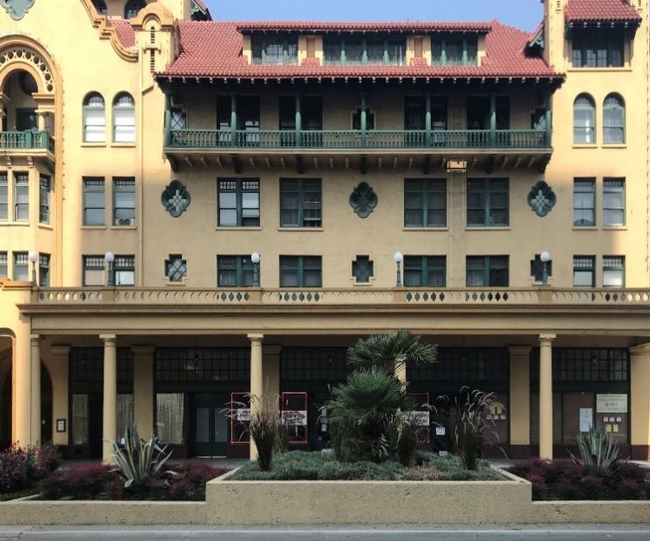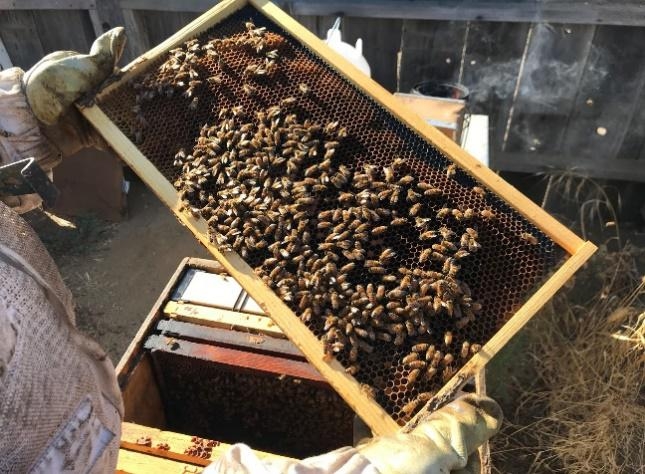Civic pride is a guiding principle of Stockton Beautiful, a local organization whose efforts have been focused on improving neighborhoods and public spaces for over 25 years. The all-volunteer group identifies project possibilities in public spaces, designs the landscape improvements, and raises funds necessary for project completion.

The latest completed project for Stockton Beautiful is part of the median strip in front of the new San Joaquin County Courthouse on Weber Avenue in downtown Stockton. (The sections covered with Astroturf are NOT part of their design.) If you drive by, look for an eye-catching mix of grasses, shrubs, and trees in a thoughtful mixture of texture and movement. The Mediterranean Fan Palm (Chamaerops humilis) with its fibrous bark and fan-shaped leaves is a quirky-looking tree that grows well in our climate and thrives among the other varied specimens in the median. The Dwarf Red Fountain Grass (Pennisetum ‘Eaton Canyon') moves with the breeze of passing cars. More color and texture are offered by the Yellow Gazania (Gazania rigens) and Century plant (Agave americana ‘variegata').
Future projects for Stockton Beautiful include redesigning the garden planter in front of the Haggin Museum to better reflect the character of the museum, and the Gerry Dunlap Rose Garden needs an irrigation upgrade. Jeff Gamboni, founding board member of the organization is also open to considering an edible landscaping project that would fall in line with the new Urban Agriculture Ordinance recently passed by the Stockton City Council. (The ordinance would allow, with restrictions, keeping bees or chickens/ducks, and selling home garden produce.) Gamboni thinks a shared public-private space in a multi-family development might offer an ideal location.

The deep knowledge and commitment it takes to become a beekeeper is reflected in the small but productive group of hives at the Ripon Community Garden. Loyko tends the hives at least once a week, dressed in protective garb as he checks the hives to make sure there is a productive egg-laying queen. (Without a productive queen, no honey is produced.) In addition to the queen, whose sole purpose is to lay eggs, are the drones and worker bees. Drones exist only to mate with the queen, and the female worker bees venture as far as a few miles away to find food to bring back to the hive.
At the Ripon Community Garden, the bees don't have far to go to find abundant sources for nectar. Citrus, melons, squash, and peppers are the nearby cornucopia for these bees, but the workers are capable of flying as far as a few miles away to find what they need among the almond orchards.
Each hive has eight frames where bees create honeycombs, the hexagonal waxy cells where they store honey and eggs. Because the hives at this garden aren't meant for commercial use, honey is usually harvested only once a year, in June or July. This past season's bounty of honey produced 150 8-ounce jars of nutritious wild honey.
But don't expect to find Ripon Community Garden's wild honey readily available to buy. The precious jars are spoken for almost before the honey is harvested.
(Find much more about beekeeping here: http://sfp.ucdavis.edu/pubs/brochures/bees/ )